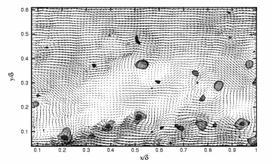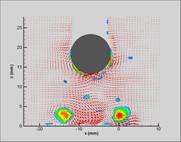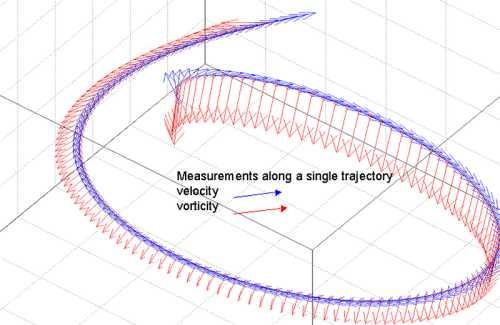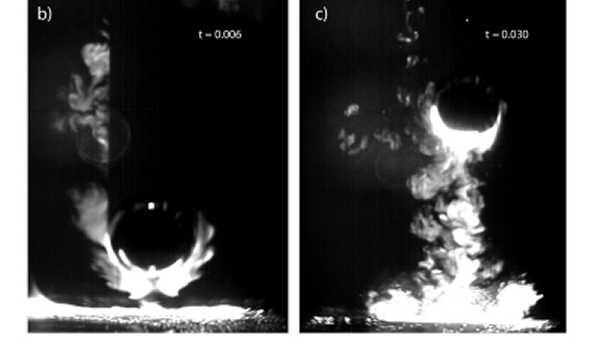Laboratory Measurements
A brief description of non-intrusive, optical, measuring flow techniques are provided below, along with a few sample results.
- PIV provides 2 components of the velocity in a plane : it is based on the spatial cross correlation between small portions of two consecutive images, a.k.a. windows; the 2D displacement of the correlation peak divided by the time interval between frames provides a velocity vector
- 3D PTV provides 3 velocity components in a volume: seeding particles are identified on the image plane of each of the four cameras and their position reconstructed in a 3D volume; velocity and accelerations are computed along the particle trajectories


Particle Image Velocimetry (PIV)
instantaneous velocity fluctuation in a zero pressure gradient turbulent boundary layer (left), flow field around a particle after a collision with a horizontal wall (right)
3D Particle Tracking Velocimetry
DPTV setup (courtesy of B. Luthi, and A. Liberzon). 4 cameras (left) focus on the same observation volume. In each image plane particles are detected and then reconstructed in the 3D volume as the intersection of at least three epipolar lines (center). Eventually matched particles at different time instants are tracked (right). With a high density of particle trajectories, the full tensor of velocity gradient can be estimated: Lagrangian measurements of velocity and vorticity along a particle trajectory are shown below.(right)

Flow Visualization: particle wall collision with A. Stocchino, DICAT Universita' di Genova


